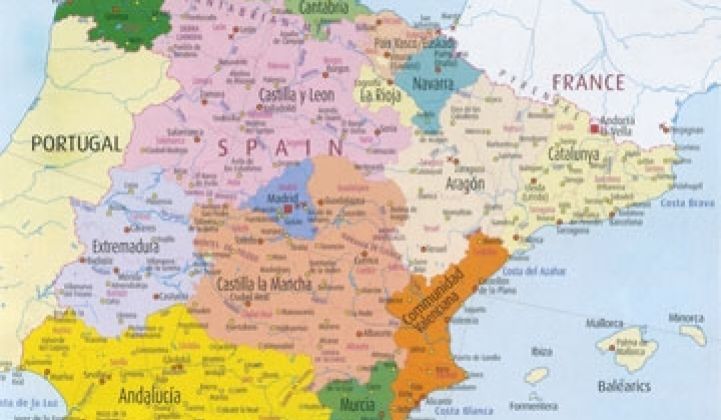These names may sound familiar: Iberdrola, Gamesa, CASA and BBVA. These giant Spanish companies reflect how Spain, despite current fiscal issues, is fast becoming a leader in innovation and generating advanced solutions in aerospace, renewable energy, water treatment, rail, biotechnology, industrial machinery and civil engineering.
For example, cheaper solar panels have led to renewed interest in power-plant-sized installations. When Spain introduced a generous solar-energy feed-in tariff in 2007, it triggered the first boom in these 'utility-scale' projects, with 2 GW installed before the government blindsided the industry and capped the tariff. Although the market slumped after that, Spain had already been established as a force in solar.
The power
Facts: Spain represents more than 2.1% of world GDP and has enjoyed a remarkable 14-year streak of annual economic growth above the 3% mark. Though 2010 has not exactly been a good year, the country should ramp up soon, despite EU concerns about the 'Club Med' countries' financial situation in the aftermath of the Greece bailout.
Juan Tomás Hernani Burzaco, Spain's Secretary General for Innovation, Ministry for Science & Innovation, emphasized the need to improve financial instruments that support innovation and added that the member states and the Commission from Europe must create co-operative agreements with financial institutions, to make bank loans available for innovation projects.
He also pointed out the need to invest in venture capital during the fledgling stages of new innovative businesses, to boost private investment. This, he said, should be done through incentives and by setting up financial channels that attract investors.
Likewise, Hernani showed the need to pay special attention to SMEs, the main generators of employment. The fostering of innovative public procurement was another of his conclusions. "It is an interesting practice to develop if we are to create new markets," he said.
Strategies that work
The Ministry of Science and Innovation is working on the State Innovation Strategy (E2I), as measures focused on five core ideas that are part of the Science, Technology and Innovation Act. This strategy consists of a series of initiatives:
- A financial environment that supports innovation;
- Support for leading markets via public acquisitions and regulations that foster innovation;
- Internationalization of innovation;
- The spread of innovation at regional and local levels; and to the entire production fabric, especially to SMEs and more traditional sectors;
- People as the driving force for change in the production model.
Of these five core ideas, Hernani emphasized people, an area in which the current Spanish presidential administration is making significant progress on specific issues such as eliminating researcher mobility barriers and improving working conditions.
"Many European barriers against innovation are cultural. Overcoming them requires a change of outlook and attitude among European citizens," he said. Recently, 600 Spanish companies established facilities in America, looking for new opportunities.
The principal E21 aims are to mobilize an additional $7.5 billion of private investment by 2015, to double by 2010 the number of businesses working in innovation, incorporating another 40,000 businesses, and to increase the number of jobs in the media and high tech sectors by 500,000. The Iberian country made a jump from minimal R&D investment -- .4% of the GDP in the 1980s -- to 1.5% in the last year, and recent trends indicate that this figure will be increasing even more (3%) in the next few years.
Strengthening interaction between regional innovation systems is essential for growth. The European Union can play an important role, complementing local, regional and national efforts by helping to establish priorities, exchanging good practices and even providing additional funding where appropriate. Again, the aspect given most importance was that of people.
According to Hernani, innovation is a driver that benefits society and is carried out by people. "That is why we need a greater number of value-added jobs and need to improve our mobility framework conditions to attract foreign talent to our continent," Hernani concluded.



